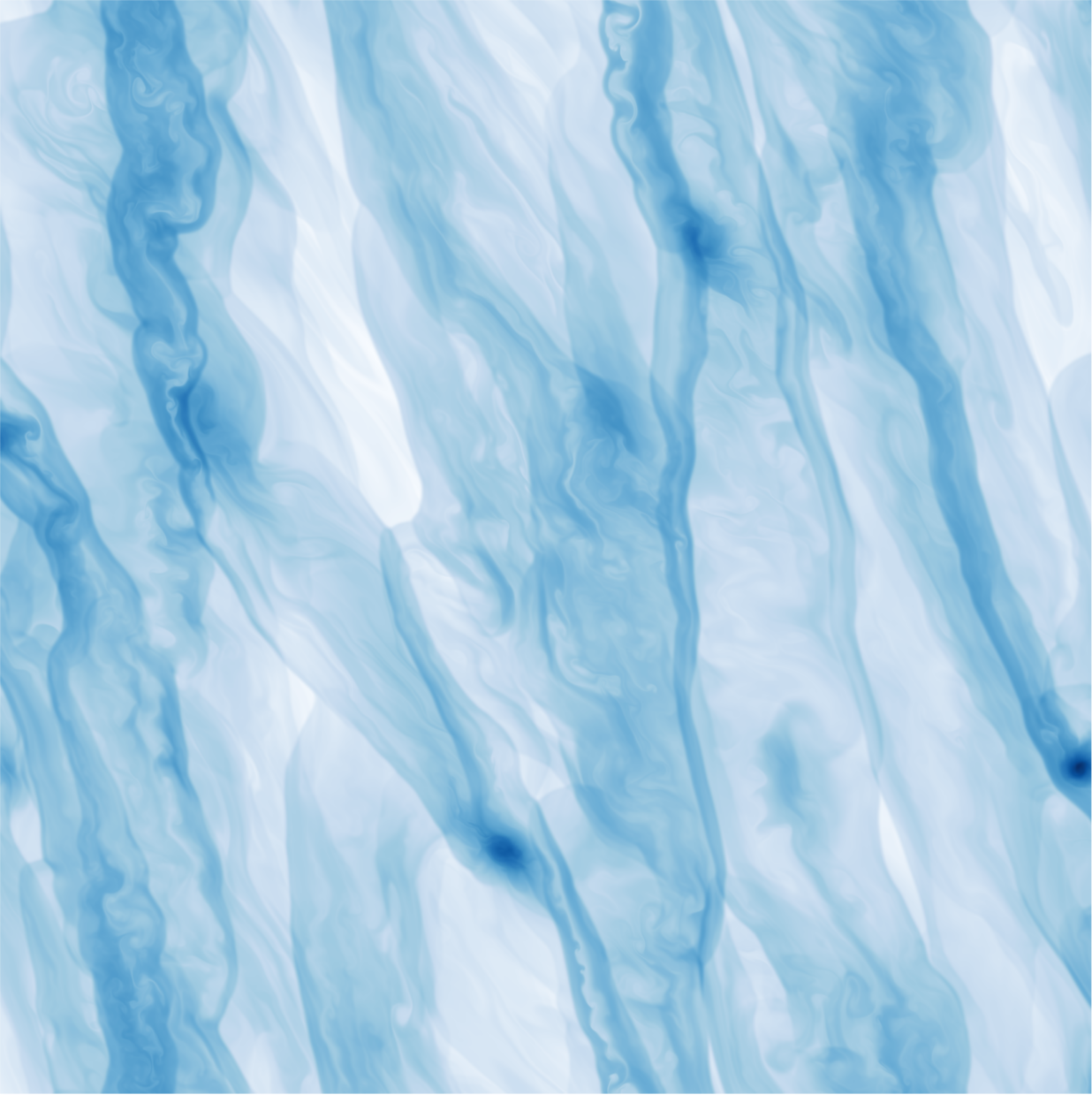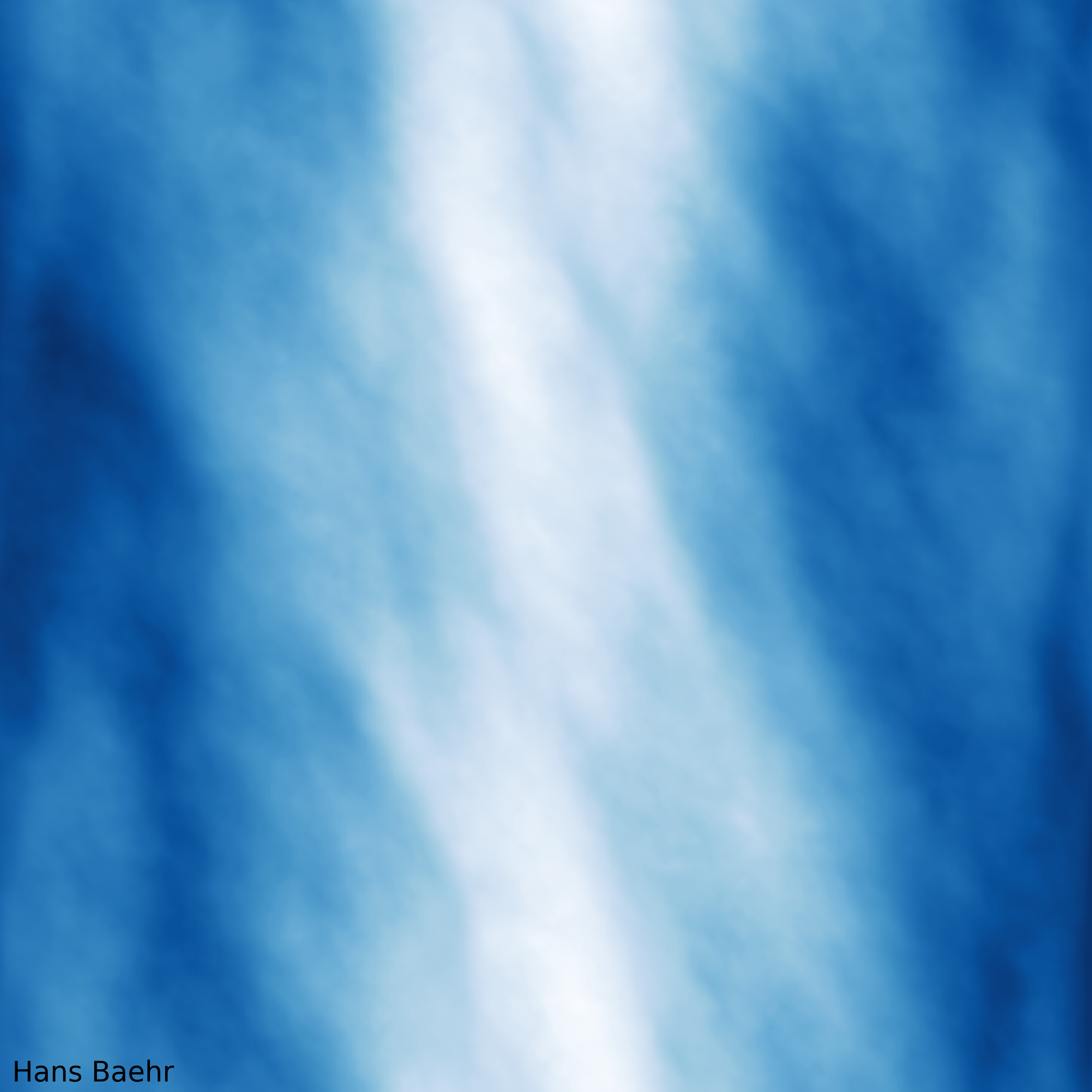Gravitational Instabilities

|
Gas overdensities often take the form of spiral arms in the disk, but under the right conditions lead to the formation of gas giant planets or even brown dwarfs and stars. My job is to model the ideal mass and cooling constraints that lead to planets. To do this I use finite difference hydrodynamic simulation codes, like PENCIL and PLUTO, to respectively model the local and global effects relating to gravitational instabilities. Shearing box simulations of gravitational instability like the image to the left are useful for their simple boundary conditions and high resolution, but in 2D have recently been shown to inappropriately treat the self-gravity at short separations of high densities due to the thin disk approximation. For this reason, my future projects (both local and global) are focusing on the 3D treatment of GI. |
Planet and Star Formation

|
The discovery of gas giant planets with large orbital distances, such as those around HR 8799, suggests that some planets may not be formed by core accretion. Gravitational instability has the potential to explain the existence of these planets and other companions while not competing with core accretion at shorter radii. Further research aims to clarify the solid enrichment and metallicity of companions formed by GI and whether the formation mechanism of an object can indeed by distinguished by their composition. Among my future projects I will focus on the formation conditions and evolution of instabilities formed in global disk simulations. Ideally this will mean combining high-resolution of fragments with global properties of the disk, such as accretion, migration, etc. Ideally, this would mean using adaptive mesh refinement to maintain high resolution of fragment formation and evolution while still maintaining coarse resolution of other regions of the disk. |
Gallery

|
||
|
Top-down look at a patch of a 2D gravitationally unstable disk. From the simulations of Baehr & Klahr (2015). |
When self-gravity is not strong enough to overcome pressure and shear stabilization, fragmentation is suppressed and gravitoturbulence remains. From Baehr et al. (2017) |
With rapid cooling, gravitational contraction wins out and a fragment results. Also from Baehr et al. (2017) |
|
|
|
Publications
Baehr, S., Baehr, H. 2025, Entropy and diffusion characterize mutation accumulation and biological information loss, Submitted to Nature Biophysics
Baehr, H., Rice, K., Yang, C.-C., Hall, C., 2025, On the Gravitational Collapse of Small Dust Grains in Self-gravitating Disk Structures, ApJ accepted
Rice, K., Baehr, H., Young, A., Booth, R., et al. 2025, Dust density enhancements and the direct formation of planetary cores in gravitationally unstable discs, MNRAS, 539, 3421
Carrera, D., Davenport, A., Simon, J., Baehr, H., et al., 2025, Turbulence Inhibits Planetesimal Formation in Class 0/I Disks Subject to Infall, ApJ, 990, 39
Klahr, H., Baehr, H., Melon Fuksman, J. D., 2023, Thermal instabilities in accretion disks II: Numerical Experiments for the Goldreich-Schubert-Fricke Instability and the Convective Overstability in disks around young stars, arxiv:2305.08165
Baehr, H., 2023, Filling in the gaps: can gravitationally unstable discs form the seeds of gas giant planets?, MNRAS, 523, 3348
Baehr, H., Zhu Z., Yang, C.-C., 2022, Direct Formation of Planetary Embryos in Self-Gravitating Disks, ApJ, 933, 100
Zhu Z., Jiang Y.-F., Baehr H., Youdin A., Armitage P. J., Martin R. M., 2021, Global 3D radiation hydrodynamic simulations of proto-Jupiter's convective envelope, MNRAS, 508, 453
Martin R. G., Zhu Z., Armitage P. J., Yang C.-C., Baehr H., 2021, Kozai-Lidov oscillations triggered by a tilt instability of detached circumplanetary discs, MNRAS, 502, 4426
Baehr H., Zhu Z., 2021, Particle Dynamics in 3D Self-gravitating Disks II: Strong Gas Accretion and Thin Dust Disks, The Astrophysical Journal, 909, 136
Baehr H., Zhu Z., 2021, Particle Dynamics in 3D Self-gravitating Disks I: Spirals, The Astrophysical Journal, 909, 135
Gerbig K., Murray-Clay R. Klahr H., Baehr H. 2020, Requirements for Gravitational Collapse in Planetesimal Formation—The Impact of Scales Set by Kelvin-Helmholtz and Nonlinear Streaming Instability, The Astrophysical Journal, 895, 91
Gibbs A., ... Baehr H., et al., 2020, EDEN: Sensitivity Analysis and Transiting Planet Detection Limits for Nearby Late Red Dwarfs, The Astronomical Journal, 159, 169
Baehr H., Klahr H., 2019, The Concentration and Growth of Solids in Fragmenting Disks, The Astrophysical Journal, 881, 162
Baehr H., Klahr H., Kratter K. M., 2017, The Fragmentation Criteria in Local Vertically Stratified Self-Gravitating Disks, The Astrophysical Journal, 848, 40
Baehr H., Klahr H., 2015, The Role of the Cooling Prescription in Disk Fragmentation: Numerical Convergence & the Critical Cooling Parameter in Self-Gravitating Disks, The Astrophysical Journal, 814, 155

